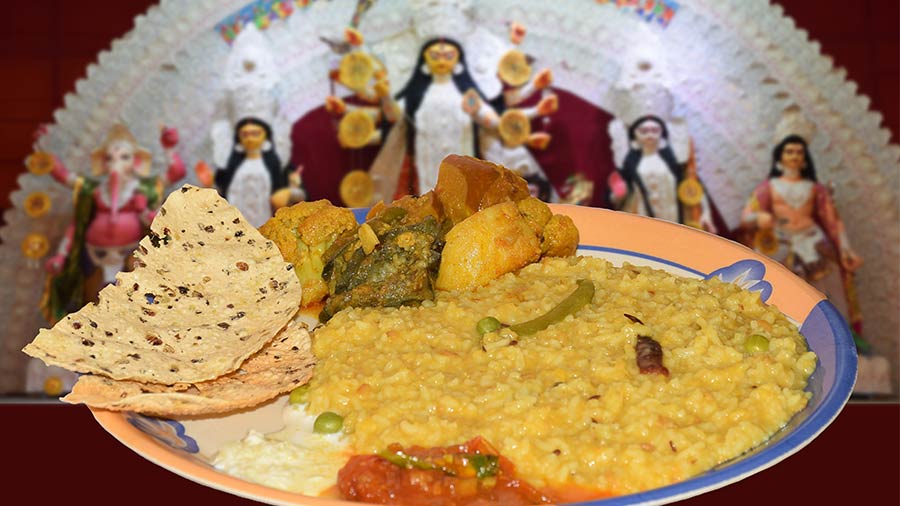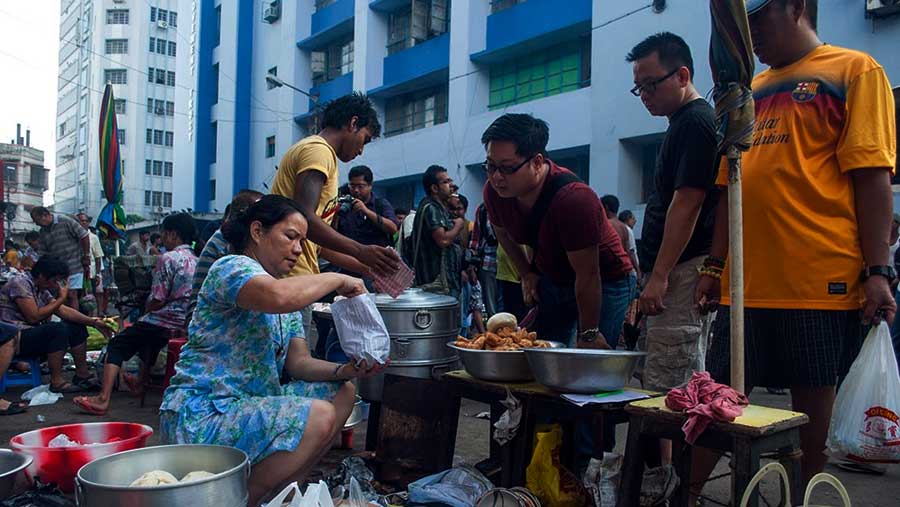What Kolkata tastes today, the world tastes tomorrow.
I smiled to myself when I heard the news. Oh, I was undoubtedly happy that Eater, the web guide for food connoisseurs, has enthroned Kolkata in its slim list of world’s best food destinations. Yet, it was glee mixed with irony as to why the obvious is so difficult to see. The city is a food lover’s paradise. Right since the time when its foundations were laid on the quiet banks of history, Kolkata has been quite the queen of taste. The people of Kolkata do not eat to live. We taste the land and its seasons in ingredients, savour centuries of migrations in the fragrance of spice. We live to eat.
Who else is so particular about the river, Padma or Ganga, that today’s Ilish has been fished from? Who demands a ripe but unripe mango for chutney, when shopping for vegetables? Now say hello to the food-obsessed citizen of Kolkata. Nothing misses their eyes or ears, nose, tongue or finger tips, when it comes to food, because eating is no different than worship, as a Kolkatan will tell you.
This is specially witnessed when Ma Durga descends from Mount Kailash, and we welcome her with mouth-watering bhoger khichuri that is shared with friends and strangers alike.
Then, right after tasting the Bhog blessed by Her, Kolkata plunges into the streets for marathon feasts that last for at least a week. Mainland China has a queue that runs a mile deep, of Chinese-food lovers waiting patiently for a table. When the festival ends, it sets off another new calendar of sweets called Shubho Bijoya. Because, all is sweet that ends with sweets.
We worship with food, we bond with food. We unify with food, defy time and power with food. We simplify life’s most mystifying questions with yes, food. Kolkata can be a difficult city for sensitive nerves. People who define city life as existence that is sorted and neatly boxed will be stunned by the chaos. Others are drawn to the fact that this city never built a wall. No fences, no boundaries along language, worship or food. Especially food.

Durga Puja bhog Shutterstock
Kolkata as the melting pot of food cultures
From its beginning, Kolkata has been home for many peoples, who came from places far apart on the map and historical clock. Dutch and Portuguese, Armenians, Afghans, Scots, Chinese, French, American, Jews and Persians. And closer home, from Uttar Pradesh, Bihar, Orissa. Each had a different reason for docking at Kolkata. Some arrived on power, some for trade, employment, religious mission, and some on route to other destinations. Whatever be the forces of history that got them here, what is more mystifying is the power that made them stay.
In the 1800s, when the first Chinese traders and workers came here, they brought a rustic Cantonese cuisine, which they protected like a flame from their hearth. The flame however, became a whole conflagration of flavours in our first Chinapara or Chinatown, Tiretti. New ingredients like cumin, coriander, wheat flour and spinach found a place next to Hakka staples like soy sauce, tofu, fermented black beans, salted duck eggs and cured pork belly. Together, they engendered the most fascinating Kolkata specialities like Hakka Noodles, Chilli Chicken and Sezchwan Sauce. The boundless city added its own sizzling chemistry.
Bengalis and Chinese share a passion for food and tea; even the word for tea is common to both: Cha! Soon, the Chinese home kitchens gave way to restaurants like Nan King, Peiping and Warldorf where Kolkata’s rich and famous loved to dine and be seen. After Kolkata, it was the turn for the rest of India to fall in love. The unique, hearty, sweet and spicy Kolkata Chinese food caught on like wildfire and spread in every direction as the first foreign cuisine in India.
Another speciality of Tiretti Bazar is the early morning breakfast market, bustling with dim sum vendors and customers even before sun-up. For a few hours every week, the lane turns into the Silk Route of ancient times. Vendors and stalls pop up all along the Tiretti lane, ladling out steaming delicacies like Toufa Kok or meatball soups, Sesame Ball, Bao Zi (meat-filled bao), Siu-Mai, that is buns filled with pork, and many other dumplings, broths and sweet rice cakes.

The Chinese breakfast at Tiretti Bazaar
The term ‘melting pot of cultures’ must have been created with Kolkata in mind. The cuisine ranges from street food icons like Nizam’s Kathi Roll, homely mainstays like Bangali shukto, to the British Raj cuisine of The Bengal Club. It is the thriving taste of a multitude of cultures. We have seen the rise and fall of history and learnt one thing: life has no easy answers. Who can explain what the plebeian potato is doing next to the noble mace, nutmeg and inchlong grain of rice in Kolkata Biryani? Why did Szechwan turn more Bengali as Sezchwan? And why is Christmas never complete without a cake that is baked by Hindu, Muslim, Jew and Sikh? Is Kolkata Fish Fry more ‘Anglo’ or more ‘Bong’?
Phuchka to Rosogolla, Kobiraji Cutlet to Kolkata Biryani
Kolkata is the biggest puzzle next to God that humanity has been unable to solve. Just like how Nietzsche pronounced that God is dead, someone once mistakenly said Kolkata is a dying city. Well, it’s obvious they never tasted phuchka or jhal muri. Or Mitra Cafe’s Prawn Cutlet. One taste and they would have to agree that truth shall prevail, and do so through Kolkata’s all-embracing flavours. You can struggle all your life to decode the Anglo Indian Mutton Curry and Bengali roshogolla. Yet all it takes is to open a mouth and heart, and you will begin to melt in their delights.
Both Kolkata and God exist as if untouched by time and space. Isn’t that the reason why this is the ultimate City of Joy? It accepts pain, and gives back joy. It walks through fire, and hardship, and comes out with magical flavours. We have got all the answers to life at the Coffee House adda with Kobiraji Cutlet. What is your question? There is no equation too hard to be squared off with Mocambo’s Devilled Crab or Baked Alaska.

Devilled Crab at Mocambo @mocambocalcutta/Instagram
Aminia’s Biryani is an institution no less venerated than, say, the National Library, or Asiatic Society. The story of how the biryani landed in Kolkata is full of twists – passion, imperial conspiracy, betrayal, exile. It all started with the British exiling the ageing Nawab of Awadh to Kolkata, then Calcutta, their seat of power in the east. His crime? He had an incorrigible lust for life. Little did they know, the Nawab’s biryani will outlast the British empire. In Kolkata, the Awadhi flavours continued to evolve, mellowing into a fuller taste with more interesting textures. And being reborn as the distinct Kolkata Biryani.
I always knew. Wait, no, it is not the stock reply that a Kolkatan has for any geo-political or socio-economic tremor. When we took Kolkata’s unique cuisine to other cities, we knew that Delhi, Mumbai, Bangalore, Hyderabad had never tasted anything like this before. The cities sang out in unison, Oh! Luchi Alur Dom, Oh! Bhapa Ilish. There will be a day when the flavours which have blossomed in Kolkata’s bylanes will explode on the world. And, God sure loves Kolkata’s food. For today, our restaurant Chourangi gives London a delicious tour of Park Street and Tiretti. Who knows which city will surrender to Malai Chingri tomorrow? What I know is this journey is my humblest salute to the City of Joy.
Anjan Chatterjee is the chief of Speciality Restaurants, which owns Mainland China, Asia Kitchen by Mainland China, Oh! Calcutta,Sigree Global Grill, Café Mezzuna, Hoppipola, Barissh and many more. And yes, he is a foodie! He is at acgenx@gmail.com

